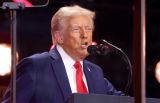Soda Tax, Exercise May Be the Best Strategies for Reducing Obesity
BySoda tax for adolescents and exercise for children may be the best strategies for reducing childhood obesity in the United States.
Researchers concluded that a tax on sugar-sweetened beverages such as sodas, energy drinks, sweet teas, and sports drinks would reduce obesity in adolescents more than other policies, such as exercise or an advertising ban. They think it would also generate significant revenue for additional obesity prevention activities.
Nearly one in three young people between 2 and 19 years old were overweight or obese in 2009-2010, and 17 percent were obese. There are significant disparities in obesity prevalence among racial/ethnic groups and by socioeconomic status. Obese adolescents tend to remain obese as adults, making childhood the ideal time to prevent obesity. For these reasons, policymakers are interested in effective programs and policies to reduce childhood obesity.
States and localities are increasingly using laws, regulations, and other policy tools to promote healthy eating and physical activity. However, federal policies can reach larger populations and fund programs that benefit populations at risk for obesity, and thus play an essential role in improving public health.
For the study, researchers evaluated the potential long-term impact of federally recommended policies.
They used a set of criteria to select three policies to reduce childhood obesity from among 26 recommended policies: afterschool physical activity programs, a one cent per ounce excise tax on sugar-sweetened beverages (SSBs), and a ban on child-directed fast food television advertising. For each policy, the literature was reviewed from January 2000 through July 2012 to find evidence of effectiveness and to create average effect sizes. The investigators then used a Markov microsimulation model to estimate each policy's impact on diet or physical activity, and then BMI, in a simulated school-aged population in 2032, after 20 years of implementation.
The model predicted that all three policies could reduce the prevalence of childhood obesity, particularly among Blacks and Hispanics, who have higher rates of obesity than whites, thus demonstrating that federal policy could alter the childhood obesity epidemic.
Afterschool physical activity programs would reduce obesity the most among children ages 6-12 (1.8 percentage points) and the advertising ban would reduce obesity the least (0.9 percentage points). The SSB excise tax would reduce obesity the most among adolescents ages 13-18 (2.4 percentage points).
"Although the model predicts that each of these policies would reduce obesity in children and adolescents, the one cent tax on SSBs also has other characteristics that make it the best option," Alyson Kristensen, lead investigator of the study said in a statement. "The tax reduces obesity while at the same time generating significant revenue for additional obesity prevention activities."
An earlier study estimated that a national one cent per ounce SSB excise tax would have generated $13.25 billion in 2010. Other advantages are that it would also reduce obesity among adults who consume SSBs, it does not require substantial federal funding to implement (unlike the afterschool policy), and would not face the legal hurdles that new regulations often encounter.
The findings were recently published in the American Journal of Preventive Medicine.
© 2025 University Herald, All rights reserved. Do not reproduce without permission.








